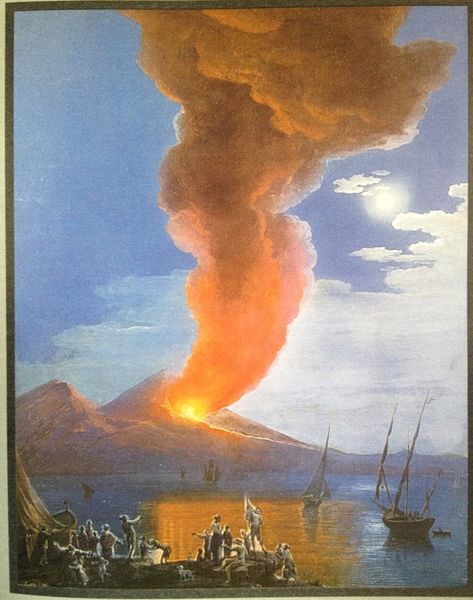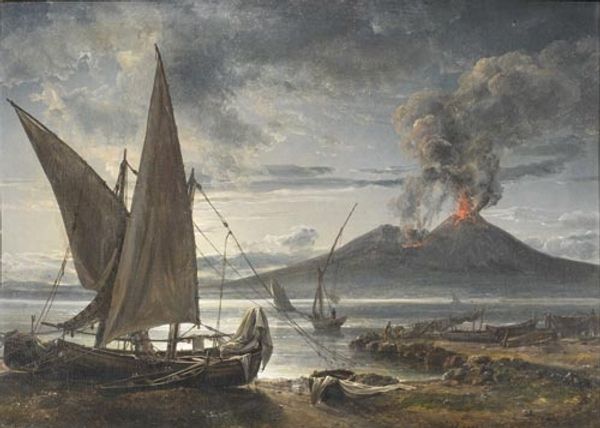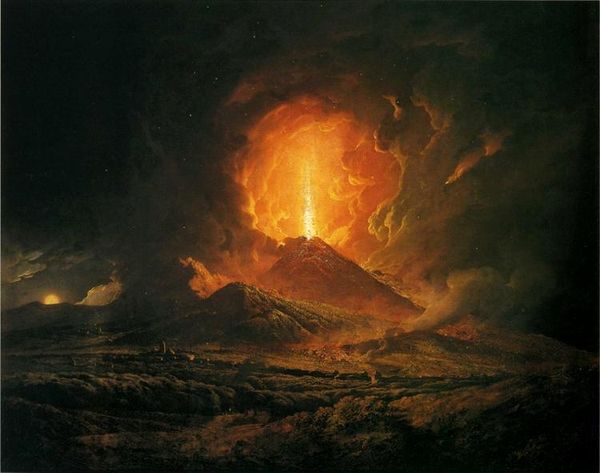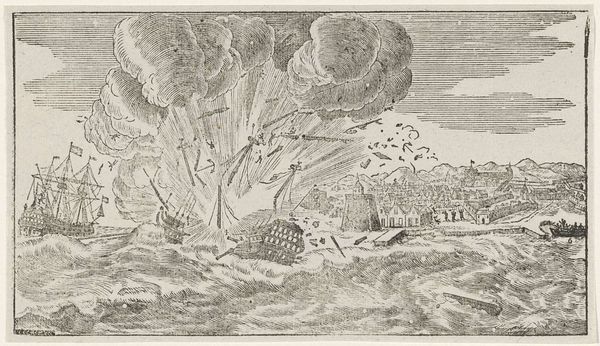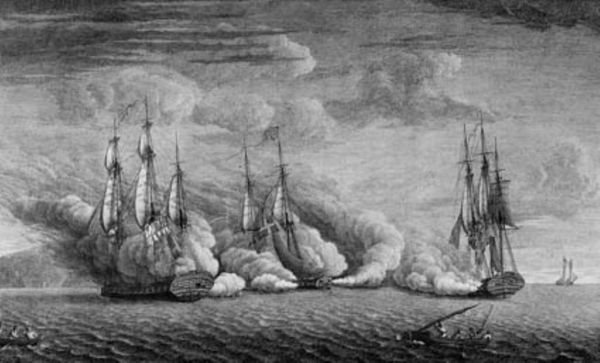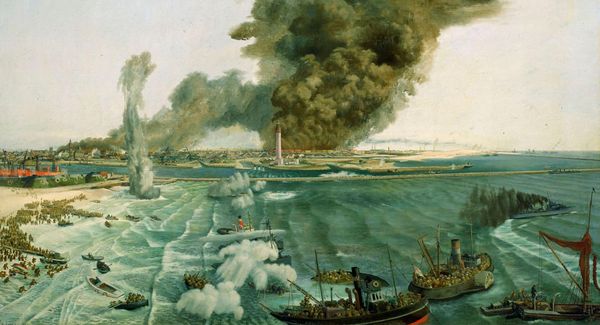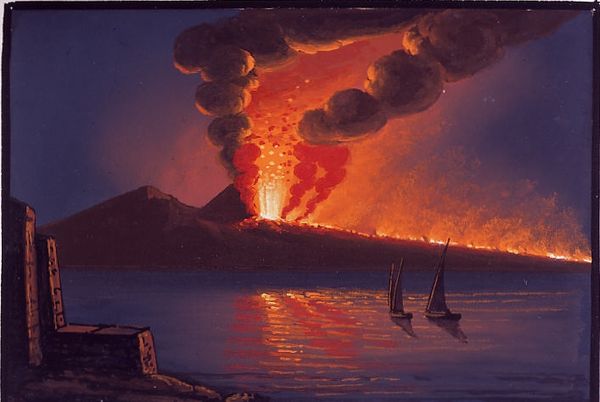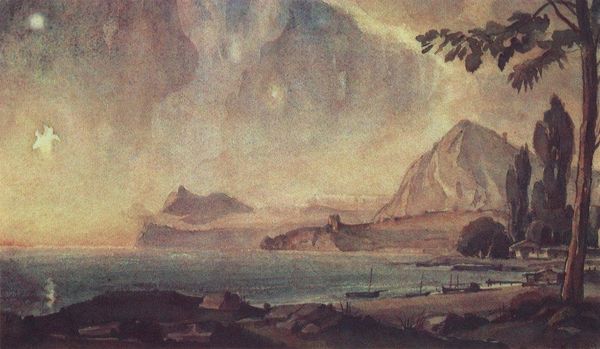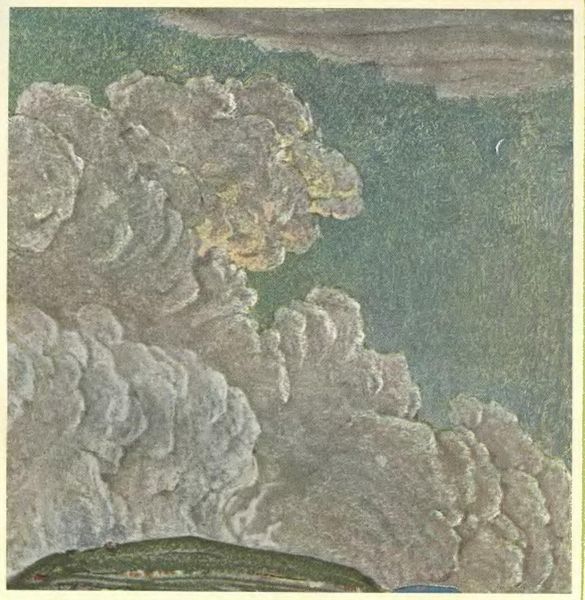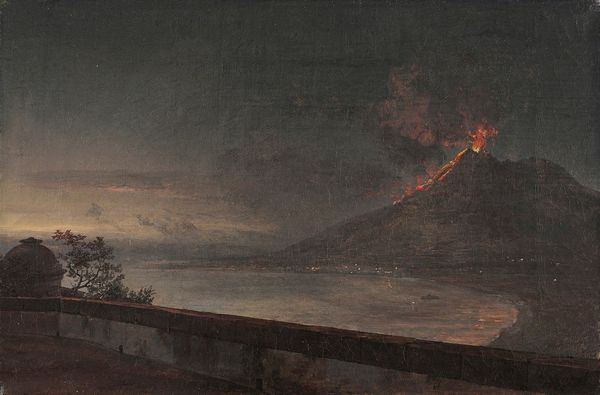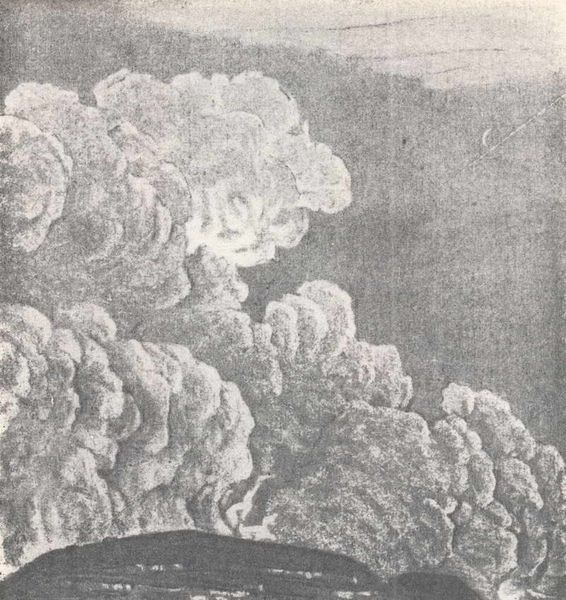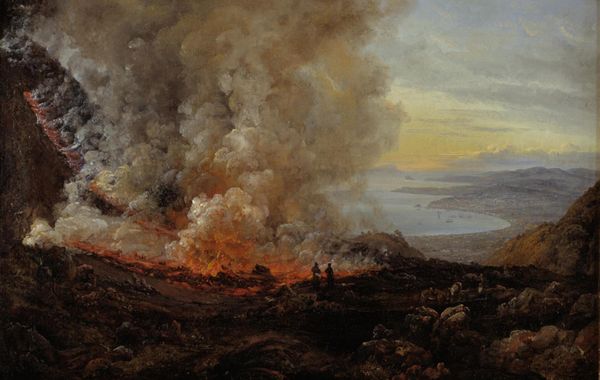
painting, oil-paint
#
painting
#
oil-paint
#
landscape
#
oil painting
#
underpainting
#
romanticism
#
painting painterly
#
history-painting
Copyright: Public domain
Curator: Right now we’re standing in front of Saverio della Gatta's "Eruption of Vesuvius on June 20, 1794," an oil painting that captures a truly dramatic natural event. Editor: The sheer scale of that ash cloud… it’s terrifyingly beautiful. You almost feel the tremor beneath your feet just looking at it, despite the delicate blues in the sky off to the right. Curator: Della Gatta really understood how to manipulate light. Look at how the darkness of the volcanic rain contrasts with the almost serene sea. The human figures in the foreground almost seem inconsequential. Editor: Those figures are interesting though. I notice how they are positioned to contemplate the sublime horror unfolding before them. The formal construction uses them as framing devices. We might even use this positioning to infer emotional dimensions, wouldn’t you say? The artist juxtaposes this catastrophic eruption and the contemplative nature of human figures. Curator: That's true! It's that Romantic fascination with the power of nature versus human insignificance, isn't it? It kind of gives me a shiver down my spine, realizing the painting commemorates something those people really lived through. To consider witnessing such immense power is a lesson in both humility and respect for the forces of the Earth. Editor: From a purely visual standpoint, observe the almost geometric composition! The painting's divided into clear horizontal planes. The sky, the sea, the land—all neatly layered and stacked, each defined with clear linear precision which, when paired with the subject matter, presents an ironic formalism. Even that magnificent plume seems almost symmetrical in its dark expression of volume. Curator: Well, whatever he intended, this glimpse into the past sure makes you think. And maybe even reassess how you'd respond when faced with such an epic moment. Editor: It’s undeniable that Gatta created a potent piece. It exemplifies how art interprets—and preserves—the magnitude of historical events, and through these lenses it offers a discourse on aesthetics, destruction, and our own perception of both.
Comments
No comments
Be the first to comment and join the conversation on the ultimate creative platform.
